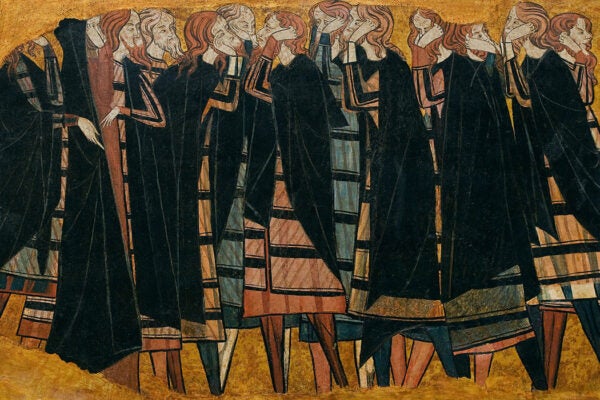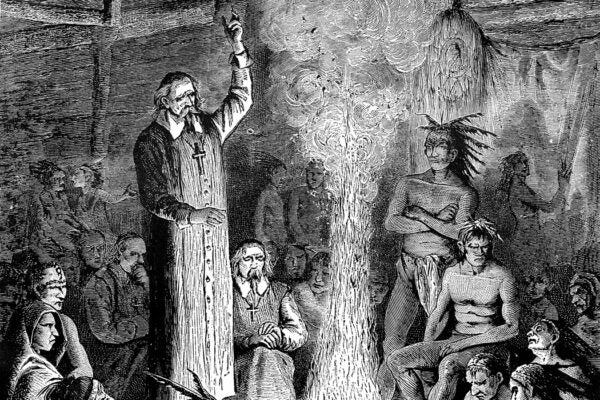“Kids these days” laments are nothing new, but the substance of the lament changes. Lately, it has become fashionable to worry that “kids these days” will be unable to write complex, lengthy essays. After all, the logic goes, social media and text messaging reward short, abbreviated expression. Student writing will be similarly staccato, rushed, or even—horror of horrors—filled with LOL abbreviations and emojis.
In fact, the opposite seems to be the case. Students in first-year composition classes are, on average, writing longer essays (from an average of 162 words in 1917, to 422 words in 1986, to 1,038 words in 2006), using more complex rhetorical techniques, and making no more errors than those committed by freshman in 1917. That’s according to a longitudinal study of student writing by Andrea A. Lunsford and Karen J. Lunsford, “Mistakes Are a Fact of Life: A National Comparative Study.”
In 2006, two rhetoric and composition professors, Lunsford and Lunsford, decided, in reaction to government studies worrying that students’ literacy levels were declining, to crunch the numbers and determine if students were making more errors in the digital age.
They began by replicating previous studies of American college student errors. There were four similar studies over the past century. In 1917, a professor analyzed the errors in 198 college student papers; in 1930, researchers completed similar studies of 170 and 20,000 papers, respectively. In 1986, Robert Connors and Andrea Lunsford (of the 2006 study) decided to see if contemporary students were making more or fewer errors than those earlier studies showed, and analyzed 3,000 student papers from 1984. The 2006 study (published in 2008) follows the process of these earlier studies and was based on 877 papers (one of the most interesting sections of “Mistakes Are a Fact of Life” discusses how new IRB regulations forced researchers to work with far fewer papers than they had before.
Remarkably, the number of errors students made in their papers stayed consistent over the past 100 years. Students in 2006 committed roughly the same number of errors as students did in 1917. The average has stayed at about 2 errors per 100 words.
What has changed are the kinds of errors students make. The four 20th-century studies show that, when it came to making mistakes, spelling tripped up students the most. Spelling was by far the most common error in 1986 and 1917, “the most frequent student mistake by some 300 percent.” Going down the list of “top 10 errors,” the patterns shifted: Capitalization was the second most frequent error 1917; in 1986, that spot went to “no comma after introductory element.”
In 2006, spelling lost its prominence, dropping down the list of errors to number five. Spell-check and similar word-processing tools are the undeniable cause. But spell-check creates new errors, too: The new number-one error in student writing is now “wrong word.” Spell-check, as most of us know, sometimes corrects spelling to a different word than intended; if the writing is not later proof-read, this computer-created error goes unnoticed. The second most common error in 2006 was “incomplete or missing documentation,” a result, the authors theorize, of a shift in college assignments toward research papers and away from personal essays.
Additionally, capitalization errors have increased, perhaps, as Lunsford and Lunsford note, because of neologisms like eBay and iPod. But students have also become much better at punctuation and apostrophes, which were the third and fifth most common errors in 1917. These had dropped off the top 10 list by 2006.
The study found no evidence for claims that kids are increasingly using “text speak” or emojis in their papers. Lunsford and Lunsford did not find a single such instance of this digital-era error. Ironically, they did find such text speak and emoticons in teachers’ comments to students. (Teachers these days?)
The most startling discovery Lunsford and Lunsford made had nothing to do with errors or emojis. They found that college students are writing much more and submitting much longer papers than ever. The average college essay in 2006 was more than double the length of the average 1986 paper, which was itself much longer than the average length of papers written earlier in the century. In 1917, student papers averaged 162 words; in 1930, the average was 231 words. By 1986, the average grew to 422 words. And just 20 years later, in 2006, it jumped to 1,038 words.
Why are 21st-century college students writing so much more? Computers allow students to write faster. (Other advances in writing technology may explain the upticks between 1917, 1930, and 1986. Ballpoint pens and manual and electric typewriters allowed students to write faster than inkwells or fountain pens.) The internet helps, too: Research shows that computers connected to the internet lead K-12 students to “conduct more background research for their writing; they write, revise, and publish more; they get more feedback on their writing; they write in a wider variety of genres and formats; and they produce higher quality writing.”
The digital revolution has been largely text-based. Over the course of an average day, Americans in 2006 wrote more than they did in 1986 (and in 2015 they wrote more than in 2006). New forms of written communication—texting, social media, and email—are often used instead of spoken ones—phone calls, meetings, and face-to-face discussions. With each text and Facebook update, students become more familiar with and adept at written expression. Today’s students have more experience with writing, and they practice it more than any group of college students in history.
Get Our Newsletter
In shifting from texting to writing their English papers, college students must become adept at code-switching, using one form of writing for certain purposes (gossiping with friends) and another for others (summarizing plots). As Kristen Hawley Turner writes in “Flipping the Switch: Code-Switching from Text Speak to Standard English,” students do know how to shift from informal to formal discourse, changing their writing as occasions demand. Just as we might speak differently to a supervisor than to a child, so too do students know that they should probably not use “conversely” in a text to a friend or “LOL” in their Shakespeare paper. “As digital natives who have had access to computer technology all of their lives, they often demonstrate in theses arenas proficiencies that the adults in their lives lack,” Turner writes. Instructors should “teach them to negotiate the technology-driven discourse within the confines of school language.”
Responses to Lunsford and Lunsford’s study focused on what the results revealed about mistakes in writing: Error is often in the eye of the beholder. Teachers mark some errors and neglect to mention (or find) others. And, as a pioneering scholar of this field wrote in the 1970s, context is key when analyzing error: Students who make mistakes are not “indifferent…or incapable” but “beginners and must, like all beginners, learn by making mistakes.”
College students are making mistakes, of course, and they have much to learn about writing. But they are not making more mistakes than did their parents, grandparents, and great-grandparents. Since they now use writing to communicate with friends and family, they are more comfortable expressing themselves in words. Plus, most have access to technology that allows them to write faster than ever. If Lunsford and Lunsford’s findings about the average length of student papers stays true, today’s college students will graduate with more pages of completed prose to their name than any other generation.
If we want to worry about college student writing, then perhaps what we should attend to is not clipped, abbreviated writing, but overly verbose, rambling writing. It might be that editing skills—deciding what not to say, and what to delete—may be what most ails the kids these days.







